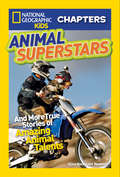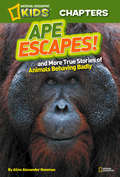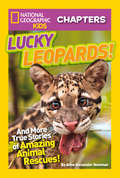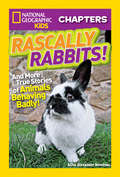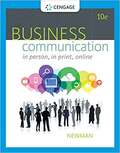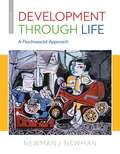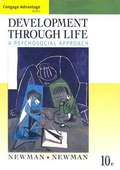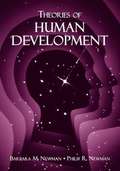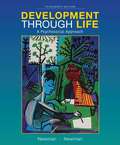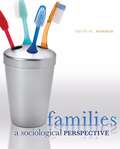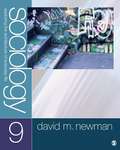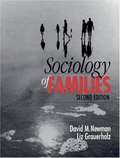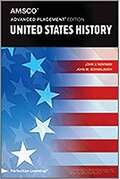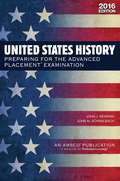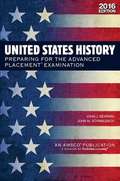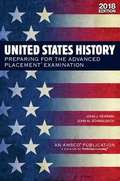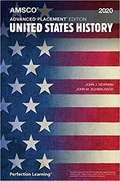- Table View
- List View
Meli Goes to Surgery (Fountas & Pinnell Classroom)
by Robert NewellMeli has surgery and gets well. NIMAC-sourced textbook
Going Dark (Fountas & Pinnell Classroom, Guided Reading Grade 6)
by Robert Newell Tim MarrsNIMAC-sourced textbook
Meli Goes to the Pool (Fountas & Pinnell Classroom)
by Robert Newell Robert ReynoldsMeli is a little dog swimming in a big pool. NIMAC-sourced textbook
Animal Superstars (National Geographic Kids Chapters)
by Aline Alexander NewmanThis entertaining and humorous chapter book will feature animals who can perform amazing acts like riding motocross, foretelling the weather, and playing a guitar. <P><P>These stories will enchant readers and empower them to devour the more text-heavy "grown up" style of the book, while still keeping the story easily digestible for a hesitant reader.
Ape Escapes (National Geographic Kids Chapters)
by Aline Alexander NewmanThis is the first in a series of 4 books that will tell the true and hilarious stories of animals that love hijinks. <P><P>In this book you'll meet 3 naughty animals, including Fu Manchu, the orangutan escape artist. <P><P>Fu Manchu lived at the Omaha Zoo and would routinely break out of his habitat to explore the zoo on a nice day. Zookeepers were baffled as to how the ape was escaping, until one day they caught him in the act. <P><P>Fu Manchu knew how to pick locks. Not only that, he had created his own tool that he used to pick the locks with, which he would store in his mouth so as not to be found out. <P><P>This and two other charming stories will engage readers and leave them wondering if humans are really the smartest animals.
Lucky Leopards! (National Geographic Kids Chapters)
by Aline Alexander NewmanBased on the hit feature in National Geographic Kids magazine, we bring you Lucky Leopards, true and inspiring stories of daring animal rescues that will engage and enchant readers of all ages. <P><P>Packed with full-color photography, and written in fun and lively prose that empowers readers to keep turning pages, these heart-warming stories will leave kids hungry for more of the animal "awwww" factor. <P><P>National Geographic Kids Chapters picks up where the best-selling National Geographic Readers series leaves off. <P><P>This new series offers young animal lovers, who are ready for short chapters with lively, true stories just right to carry in a backpack, share with friends, and read under the covers at night.National Geographic supports K-12 educators with ELA Common Core Resources.Visit www.natgeoed.org/commoncore for more information.
Rascally Rabbits! (National Geographic Kids Chapters)
by Aline Alexander NewmanThese bunnies may look adorable, but there's more than meets the eye! <P><P>In Rascally Rabbits, meet some rabbits that cause nothing but trouble, a rescue pup who will eat ANYTHING, and a sneaky bear with a taste for treats. <P><P>Readers won't stop laughing as they read these hilarious--and completely true!--stories. <P><P>Filled with engaging photos, fast facts, and fascinating sidebars, readers won't want to put this book down.
How to Speak Cat: Science 4. 2 (Panorama)
by Aline Alexander Newman Gary WeitzmanNIMAC-sourced textbook
Business Communication: In Person, In Print, Online
by Amy NewmanDiscover a realistic approach to communication in today's organizations with BUSINESS COMMUNICATION: IN PERSON, IN PRINT, ONLINE, 10E. You learn today's most important business communication concepts in detail and within the context of how communication happens in organizations today. Company examples and situations demonstrate how principles work in the real business world. In addition to refining core written and oral communication skills, you learn to navigate complex relationships and use current, sophisticated technologies. You master the skills to create PowerPoint decks, manage your online reputation with LinkedIn and other tools, engage customers using social media, lead web meetings and conference calls, and more. With self-reflection questions throughout the book, you develop a deeper understanding of yourself and how to communicate most effectively to reach your personal and professional goals.
Development Through Life: A Psychosocial Approach (Twelfth Edition)
by Barbara M. Newman Philip R. NewmanNewman and Newman use a chronological approach to present development across the life span, drawing on the psychosocial theory of Erik Erikson to provide a conceptual framework for the text. The authors address physical, intellectual, social, and emotional growth in all life stages, focusing on the idea that development results from the interdependence of these areas at every stage, and placing special emphasis on optimal development through life.
Development Through Life: A Psychosocial Approach (10th edition)
by Barbara M. Newman Philip R. NewmanDesigned for an undergraduate course in human development, this textbook describes the physical, intellectual, social, and emotional growth that occurs in each of 11 life stages. Its psychosocial approach emphasizes the continuous interaction and integration of individual competencies with the demands and resources of the surrounding culture. The ninth edition features a new chapter on death, dying, and bereavement. A glossary of terms completes the volume.
Theories of Human Development
by Barbara M. Newman Philip R. NewmanIntended for courses on theories of human development, this new text presents nine theories grouped into three major families - those that emphasize biological systems; those that emphasize environmental factors; and those that emphasize a dynamic interaction between biological and environmental forces. The nine theories selected have a long and productive history in human development and continue to evolve as a result of new insights. The inclusion of social role theory and life course theory expand the book's relevance to the study of adulthood and aging. Grouping the theories by families enhances students' ability to think critically about theoretical ideas, assess the strengths and weaknesses of each theory, and gain a deeper understanding of how each theory guides research and application. The three families are introduced with a brief overview of the unique perspectives of each theory and the rationale for grouping these theories together. Discussion of each theory includes: the historical and cultural context in which the theory was developed; an overview of key concepts and important ideas; new directions in contemporary scientific work; a research example illustrating how the theory has been tested and modified; an application showing how the theory has guided the design of an intervention or program; an analysis of how the theory answers basic questions about human development; and a critique highlighting the theories' strengths and weaknesses. Theories of Human Developmentserves as a text in advanced undergraduate and/or beginning graduate courses in theories of human development. Its clear organization and engaging writing style make it accessible to students with a minimal background in human development.
Development Through Life: A Psychosocial Approach
by Barbara Newman Philip NewmanHuman development is fascinating. This text uses a life-stage approach to present development across the life span, drawing on the psychosocial theory of Erik Erikson to provide a conceptual framework. The authors address physical, intellectual, social, and emotional growth in 11 life stages, from the prenatal period through elderhood, focusing on the idea that development results from the interdependence of individuals and their environments at every stage, and placing special emphasis on how optimal development may be fostered throughout life. They also provide many cases that show you how research and theories can be applied to contemporary issues, the diversity of experiences that are possible at a certain period of life, and how people cope with challenges they face at various points in life.
Families: A Sociological Perspective
by David M. NewmanFamilies: A Sociological Perspective successfully connects to students' personal lives while showing how sociologists understand and explain families. It is not only informative in terms of current sociological knowledge of families, but meaningful in terms of contemporary family debates and applicable to students' own family experiences. "What Does it All Mean?", "Going Global", and "See for Yourself" sections appear throughout the text allowing students to think and actively "do" sociology like sociologists to explore theoretical concepts to better understand their own family lives as well as those of others.
Sociology: Exploring the Architecture of Everyday Life (9th Edition)
by David M. NewmanThis text makes connections between sociology and current trends and events. Most chapters include a photo essay with b&w photos. Chapter learning features include suggestions for real-life activities and informal experiments, plus chapter key points and terms. The student website provides interactive study tools, readings, video and audio links, and journal articles. This ninth edition refers to recent political, historical, and cultural events and technology. Some statistical tables have been changed to more readable charts and graphs. The boxed features on sociologists at work and micro-macro connections have been updated. Newman is affiliated with DePauw University. Annotation ©2012 Book News, Inc. , Portland, OR (booknews. com)
Sociology of Families, Second Edition
by David M. Newman Liz GrauerholzSociology of Families, Second Edition, begins at the level of the individual by examining familiar contemporary issues and topics students are likely to feel strongly about. David Newman and Liz Grauerholz next show students the deeper and more detailed sociological underpinnings of the issues at hand, using the theories and data of social sciences to understand the meaning and broader relevance of these controversies and experiences.
Advanced Placement United States History
by John J Newman Schmalbach John MConcise and accessible text structured and written to follow the current AP Course and Exam Description. Content topics provide core narrative of U.S. history organized in short, focused sections. The text is aligned to course exam framework and correlated in the areas of historical thinking skills, reasoning processes, themes, and content. Text includes primary sources, special features, multiple assessment opportunities, and a complete AP U.S. History practice exam. Prior edition available.
United States History: Preparing for the Advanced Placement Examination ,Third Edition
by John J. Newman John M. SchmalbachUnited States History Preparing for the AP Exam ~ 2015 Edition
United States History: Preparing for the Advanced Placement Examination, Third Edition
by John J. Newman John M. SchmalbachAP® U.S. History Exam Prep
United States History: : Preparing For The Advanced Placement Examination (2016 Exam)
by John J. Newman John M. SchmalbachNIMAC-sourced textbook
United States History: Preparing for the Advanced Placement Examination
by John J. Newman John M. SchmalbachNIMAC-sourced textbook
United States History, AMSCO® Advanced Placement® Edition (AMSCO® Advanced Placement®)
by John J. Newman John M. SchmalbachNIMAC-sourced textbook
Advanced Placement United States History
by John Newman John Schmalbach<p>Equip your students to excel on the current AP United States History Exam. This new edition is correlated to the 2019 course exam description framework in the areas of historical thinking skills, reasoning processes, themes, and content. The book is divided into nine units following chronological periods, mirroring the most current AP U.S. History framework. Featuring eight historical themes that address broad recurring patterns and topics in U.S. history, helping students connect historical developments in different times and places. Updates put recent political events in context, including events since 2016. <p>This edition also includes more short-answer questions that use secondary sources, matching a change to the 2020 exam. Chapters conclude with a thematically organized list of key terms, people, and events for comprehensive review. The Historical Perspectives features address how historians have interpreted historical events in diverse ways. Each Think As a Historian feature focuses on one of the historical thinking skills or reasoning skills tested on the AP exam.</p>
Agribusiness Management and Entrepreneurship (Third Edition)
by Michael E. Newman Walter J. WillsAgribusiness Management and Entrepreneurship is intended to fill the need for a basic textbook covering the planning, organizing, and managing of an operation; as well as provide a comprehensive source for those who wish to consider a business from the ownership point of view, specifically as it relates to the vast area of agribusiness.

